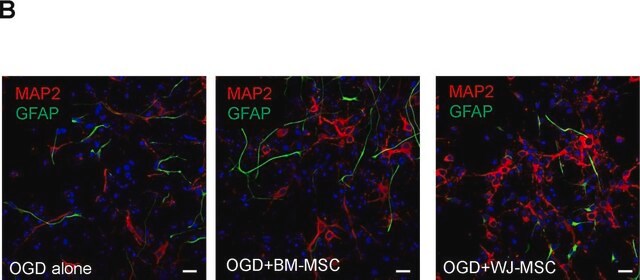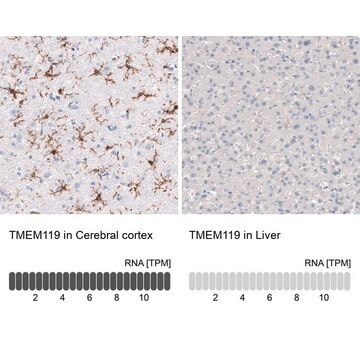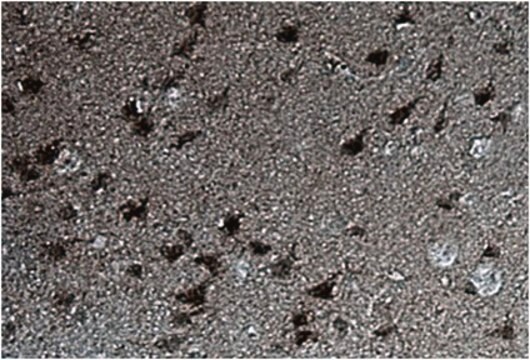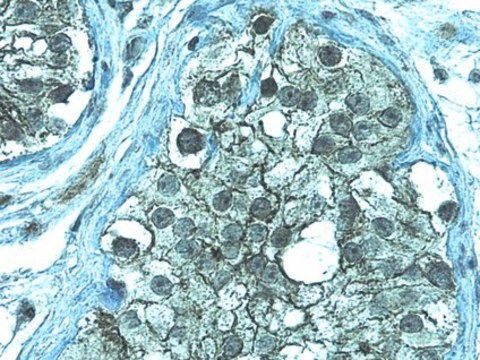MABN2629
Anti-Poly-Neu5Ac Antibody, clone 12E3
Sinonimo/i:
N-Acetylneuraminic acid, NANA
About This Item
Prodotti consigliati
Origine biologica
mouse
Livello qualitativo
Forma dell’anticorpo
purified antibody
Tipo di anticorpo
primary antibodies
Clone
12E3, monoclonal
Purificato mediante
affinity chromatography
Reattività contro le specie
human, mouse
Reattività contro le specie (prevista in base all’omologia)
rat
Confezionamento
antibody small pack of 100
tecniche
ELISA: suitable
flow cytometry: suitable
immunoprecipitation (IP): suitable
western blot: suitable
Isotipo
IgMκ
Sequenza dell’epitopo
Unknown
N° accesso ID proteina
N° accesso UniProt
Temperatura di conservazione
-10 to -25°C
Specificità
Immunogeno
Applicazioni
Evaluated by Western Blotting in one day old Mouse brain tissue extract.
Western Blotting Analysis: A 1:1,000 dilution of this antibody detected Poly-Neu5Ac in one day old Mouse brain tissue extract.
Tested Applications
Flow Cytometry Analysis: A representative lot detected Poly-Neu5Ac in Flow Cytometry applications (Davies, L.R.L., et al. (2012). J Biol Chem. 287(34):28917-31).
Western Blotting Analysis: A representative lot detected Neu5Ac in Western Blotting applications (Yabe, U., et al. (2003). J Biol Chem. 278(16):13875-80; Naito-Matsui, Y., et al. (2017). J Biol Chem. 292(7):2557-2570).
Immunoprecipitation Analysis: A representative lot detected Neu5Ac in Immunoprecipitation applications (Yabe, U., et al. (2003). J Biol Chem. 278(16):13875-80).
ELISA Analysis: A representative lot detected Neu5Ac in ELISA applications (Sato, C., et al. (1995). J Biol Chem. 270(32):18923-8).
Note: Actual optimal working dilutions must be determined by end user as specimens, and experimental conditions may vary with the end user.
Descrizione del bersaglio
Stato fisico
Ricostituzione
Stoccaggio e stabilità
Altre note
Esclusione di responsabilità
Non trovi il prodotto giusto?
Prova il nostro Motore di ricerca dei prodotti.
Codice della classe di stoccaggio
12 - Non Combustible Liquids
Classe di pericolosità dell'acqua (WGK)
WGK 2
Punto d’infiammabilità (°F)
Not applicable
Punto d’infiammabilità (°C)
Not applicable
Certificati d'analisi (COA)
Cerca il Certificati d'analisi (COA) digitando il numero di lotto/batch corrispondente. I numeri di lotto o di batch sono stampati sull'etichetta dei prodotti dopo la parola ‘Lotto’ o ‘Batch’.
Possiedi già questo prodotto?
I documenti relativi ai prodotti acquistati recentemente sono disponibili nell’Archivio dei documenti.
Il team dei nostri ricercatori vanta grande esperienza in tutte le aree della ricerca quali Life Science, scienza dei materiali, sintesi chimica, cromatografia, discipline analitiche, ecc..
Contatta l'Assistenza Tecnica.







